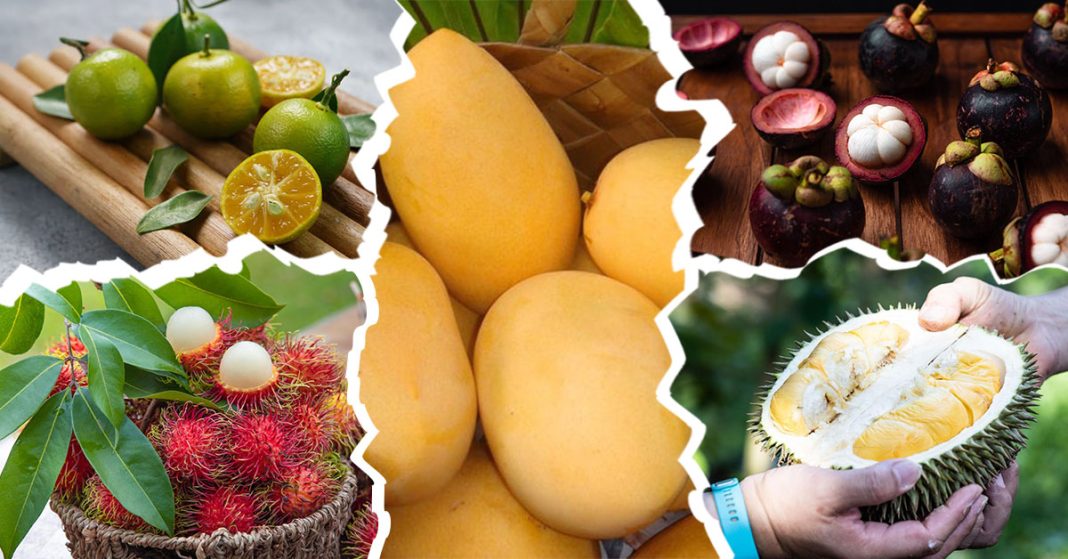The Philippines, with its sunny skies and lush landscapes, is bursting with a colorful array of fruits you won’t find anywhere else! Thanks to its tropical climate and rich biodiversity, the archipelago is home to some seriously unique fruits.
Let’s explore some of the most exciting native fruits in the Philippines that are waiting for you to taste!
What’s Inside
- Carabao Mango
- Calamansi
- Catmon
- Guyabano
- Longan
- Duhat
- Rambutan
- Atis
- Camachile
- Langka
- Mangosteen
- Santol
- Chico
- Durian
1. Carabao Mango
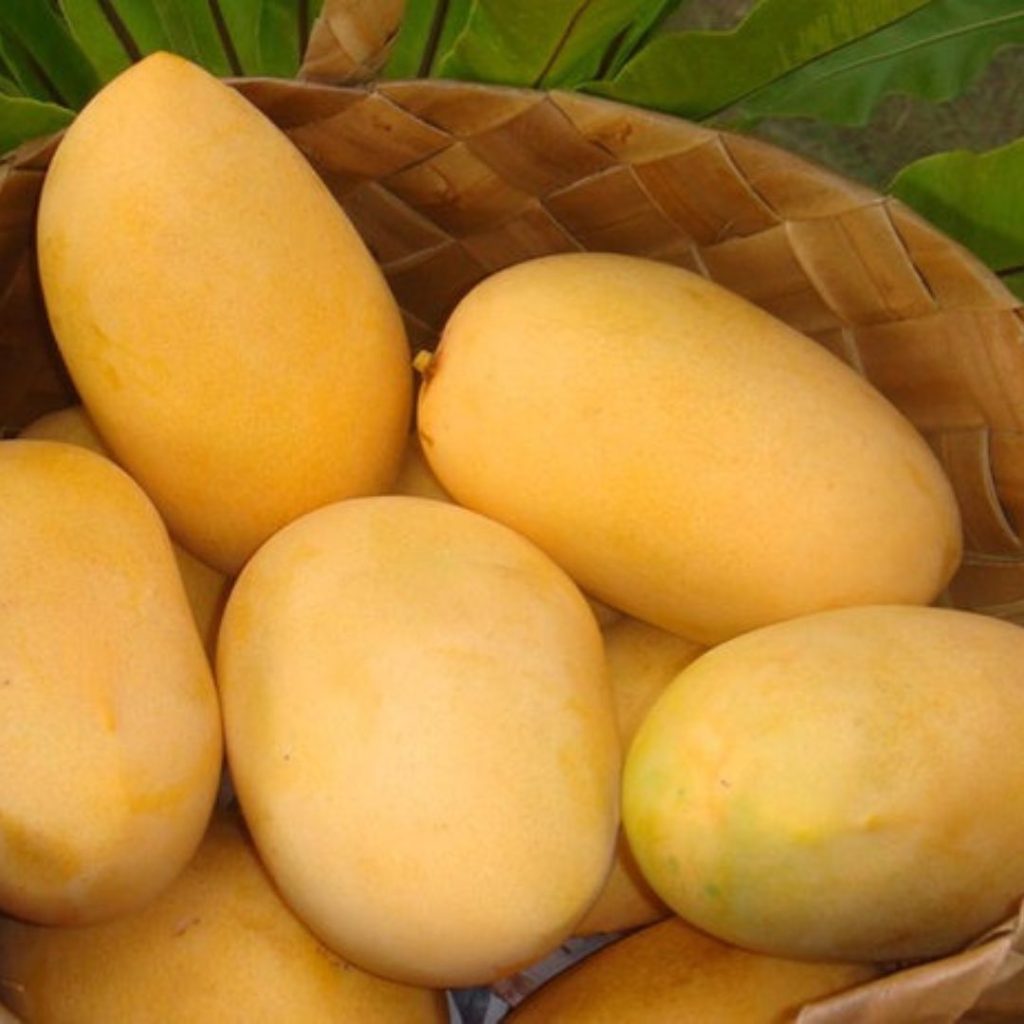
Known worldwide as the sweetest mango, the Carabao mango is a golden gem with velvety, fiberless flesh that melts in your mouth. Its flavor is the perfect mix of rich sweetness and a hint of tang, making it irresistible whether eaten fresh, dried, or turned into juices and desserts. Carabao mango was also listed as the sweetest in the world by the 1995 edition of the Guinness Book of World Records.
History in the Philippines:
Native to the country, the Carabao mango takes its name from the hardworking water buffalo, the carabao, a staple of Filipino agriculture. Cultivated for centuries, these mangoes can be found in Guimaras, Zambales, and the Ilocos Region—with Guimaras being the Mango Capital of the Philippines. .
2. Calamansi
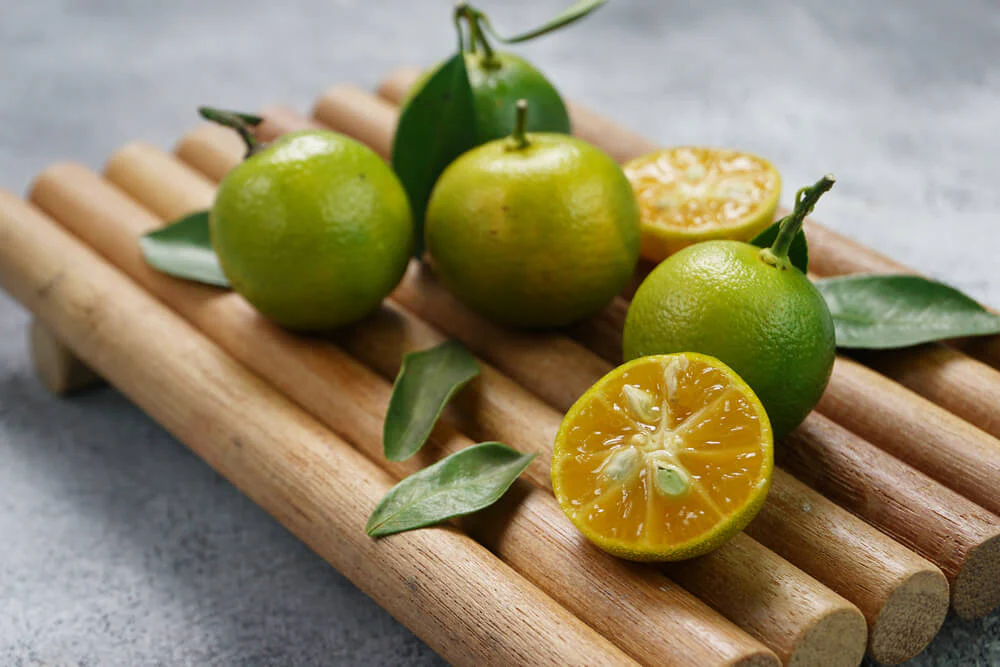
These tiny green citrus fruits may be small, but they pack a punch of tangy, zesty goodness. Calamansi is a Filipino kitchen superstar, used in almost everything from marinades and dipping sauces to refreshing juices. Its versatility and sharp flavor make it a go-to for enhancing dishes and quenching thirst.
History in the Philippines:
Indigenous to the Philippines, calamansi has been a part of local life for generations. Its resilience and adaptability make it a common sight in backyards and markets across Luzon and the Visayas. Filipinos often refer to it as the “Philippine lime or Philippine lemon,” and it’s a source of both flavor and pride.
3. Catmon
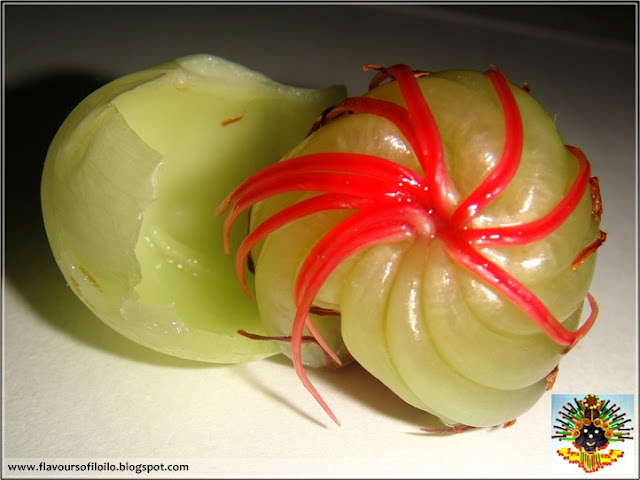
Catmon or katmon, is a rare and unique fruit with a round, green exterior and a tart, tangy flavor that’s perfect for jams, sauces, or eaten fresh with a sprinkle of salt. Its fragrant white pulp makes it a delightful addition to traditional Filipino dishes.
History in the Philippines:
The catmon tree is endemic to the Philippines, thriving in various parts of the archipelago, including the Babuyan Islands, Luzon, Polillo, Mindoro, Masbate, Leyte, Negros Island, Guimaras, Cebu, and Basilan.
4. Guyabano
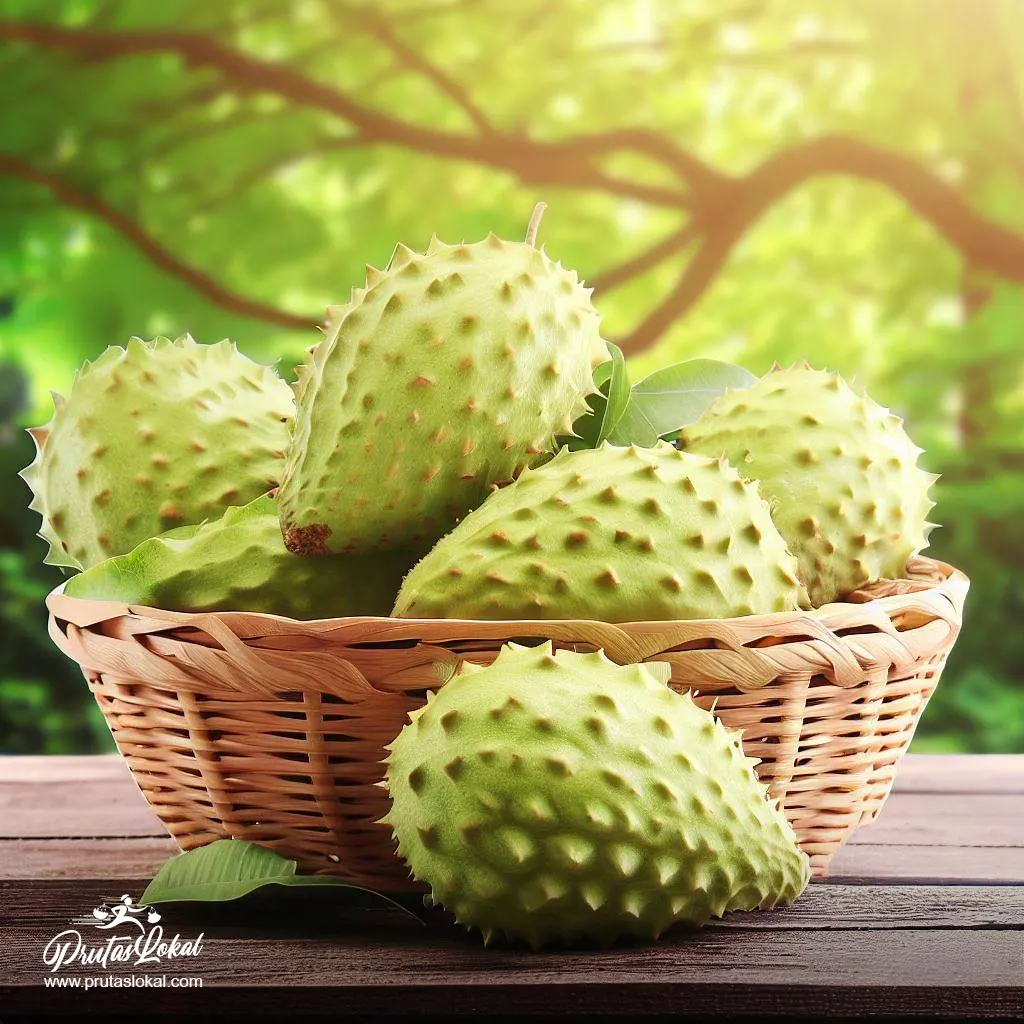
With its spiky green exterior and creamy, tangy-sweet white flesh, guyabano, also known as soursop, is a tropical delight. Its flavor is a mix of citrusy tartness and tropical sweetness, making it perfect for juices, smoothies, and desserts.
History in the Philippines:
Introduced by Spanish colonizers from the Americas and the Caribbean, guyabano quickly became a favorite in Filipino gardens and farms. Today, it’s celebrated not only for its flavor but also for its purported health benefits, including reducing heart rate and spasms.
5. Longan
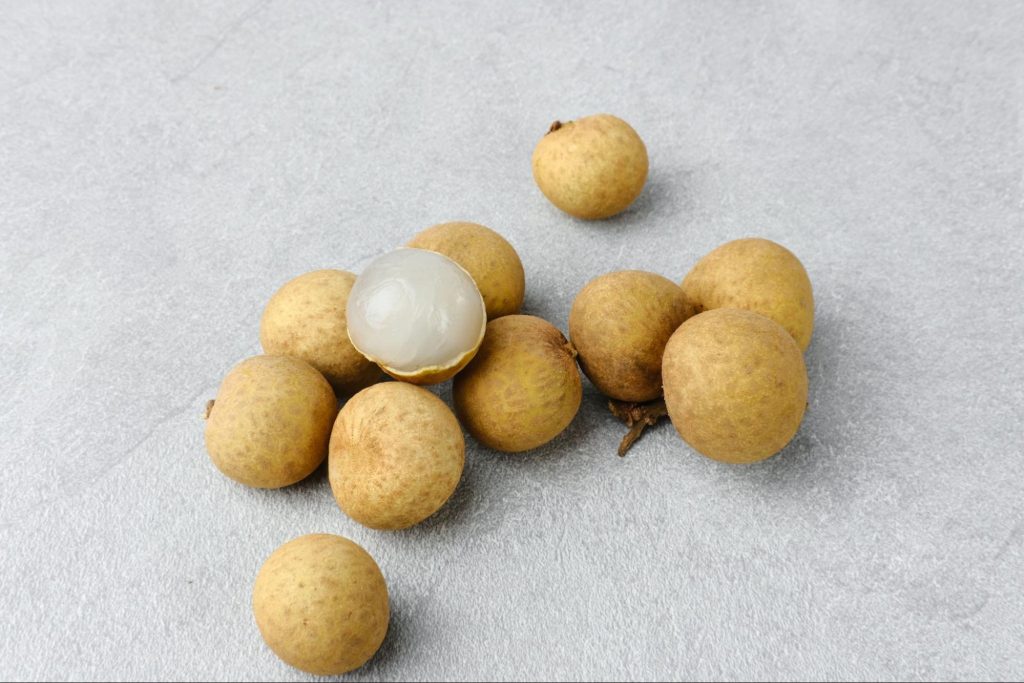
Often called the “dragon’s eye” because of its translucent flesh and round seed, longan is sweet, juicy, and refreshingly tropical.
History in the Philippines:
Longan made its way to the Philippines from Southern China and Myanmar. Its adaptability to tropical climates allowed it to thrive in Laguna, Quezon, and other provinces, where it’s become a beloved addition to local fruit baskets.
6. Duhat
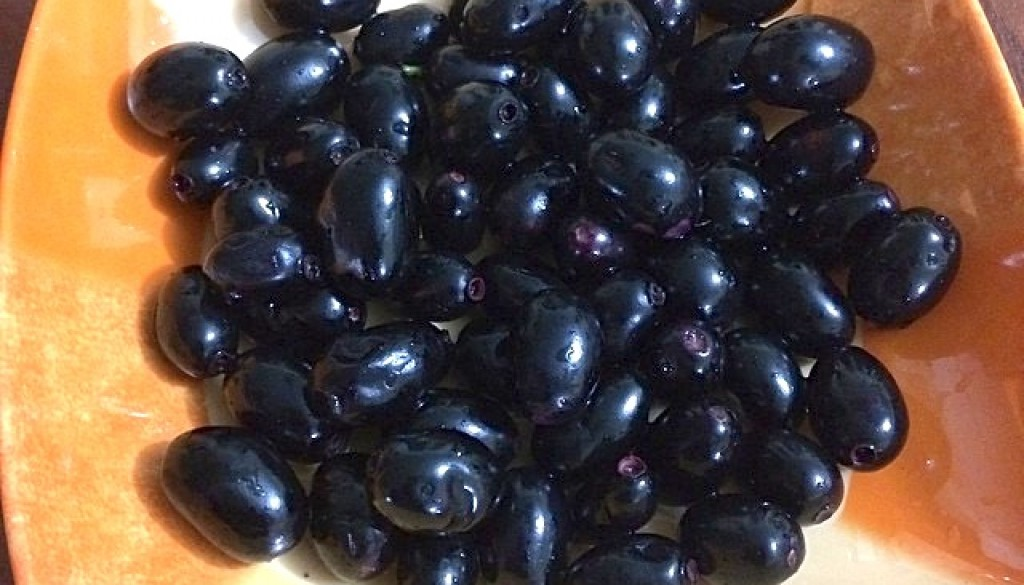
Duhat, also called java plum, is a small, grape-like fruit with deep purple skin and a tart, slightly sweet taste. It’s often enjoyed fresh or fermented into a tangy wine. Its juice leaves a temporary purple stain on your tongue—a playful reminder of its vibrant flavor.
History in the Philippines:
Brought to the Philippines from India by Spanish settlers, duhat has been cultivated for hundreds of years. It’s commonly found growing in rural areas, especially in Luzon, where it thrives in the wild.
7. Rambutan
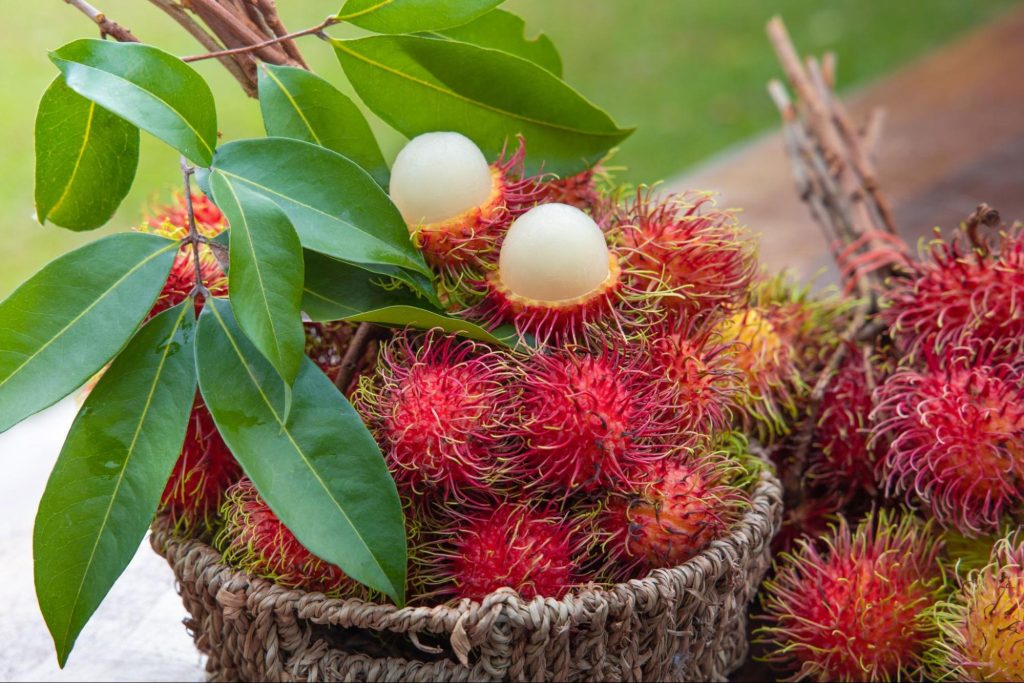
With its hairy red shell and sweet, lychee-like flesh, rambutan is a feast for both the eyes and the taste buds. Its tropical sweetness and juicy texture make it a favorite among Filipinos of all ages.
History in the Philippines:
Originally from Malaysia, rambutan found its way to the Philippines in the 19th century. It flourishes in tropical regions like Southern Luzon (Laguna and Mindanao) and some parts of Northern and Southern Mindanao where it’s a staple in local markets during its harvest season.
8. Atis
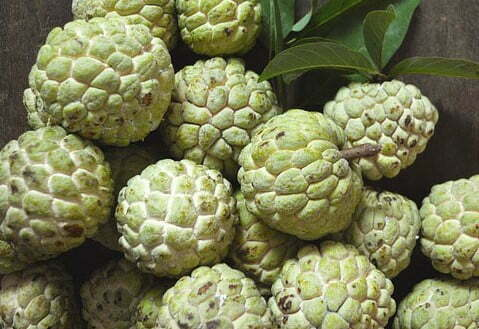
Atis or sugar apple, has a green, bumpy exterior that hides its creamy, sweet flesh. Each segment of its soft interior offers a tropical burst of flavor that’s simply unforgettable.
History in the Philippines:
Introduced by the Americas and West Indies, and Spanish traders, atis quickly adapted to the Philippine climate, and can be found in various parts of the country.
9. Camachile
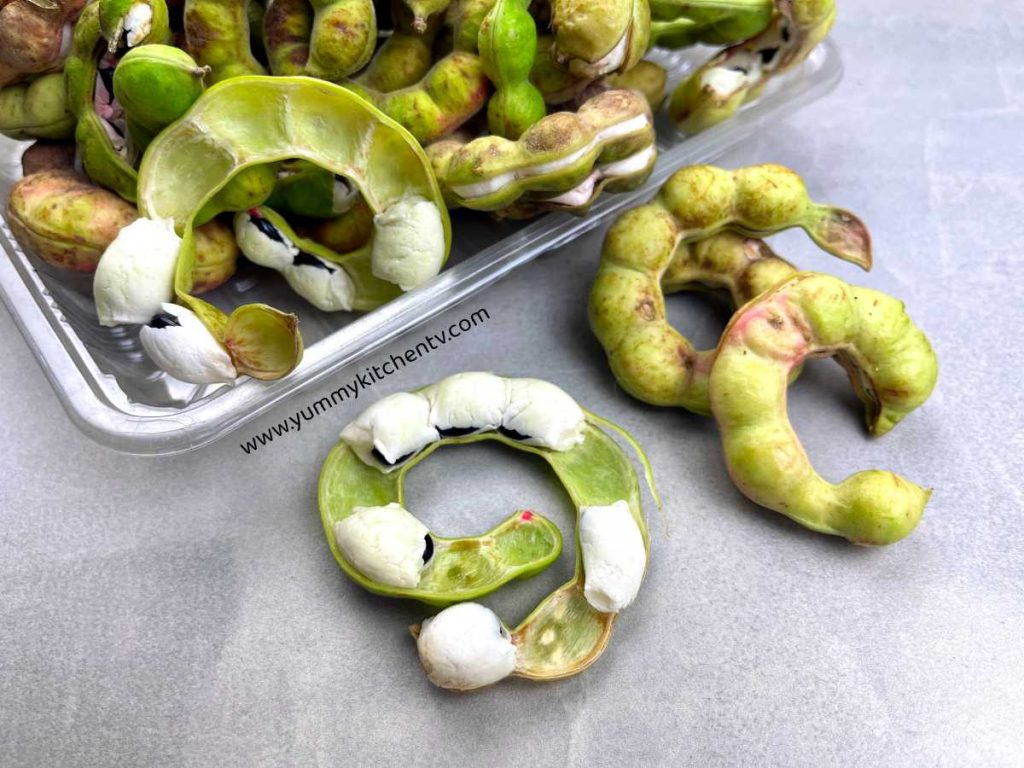
Also known as Manila Tamarind, camachile’s curved pods contain sweet and tangy flesh with a slightly grainy texture. Its bright pinkish hue and unique shape make it an eye-catching treat.
History in the Philippines:
Brought by Spanish colonizers over 300 years ago, camachile has since become a familiar sight in rural areas. Its hardy nature allows it to grow even in less fertile soils, making it a common roadside fruit.
10. Langka
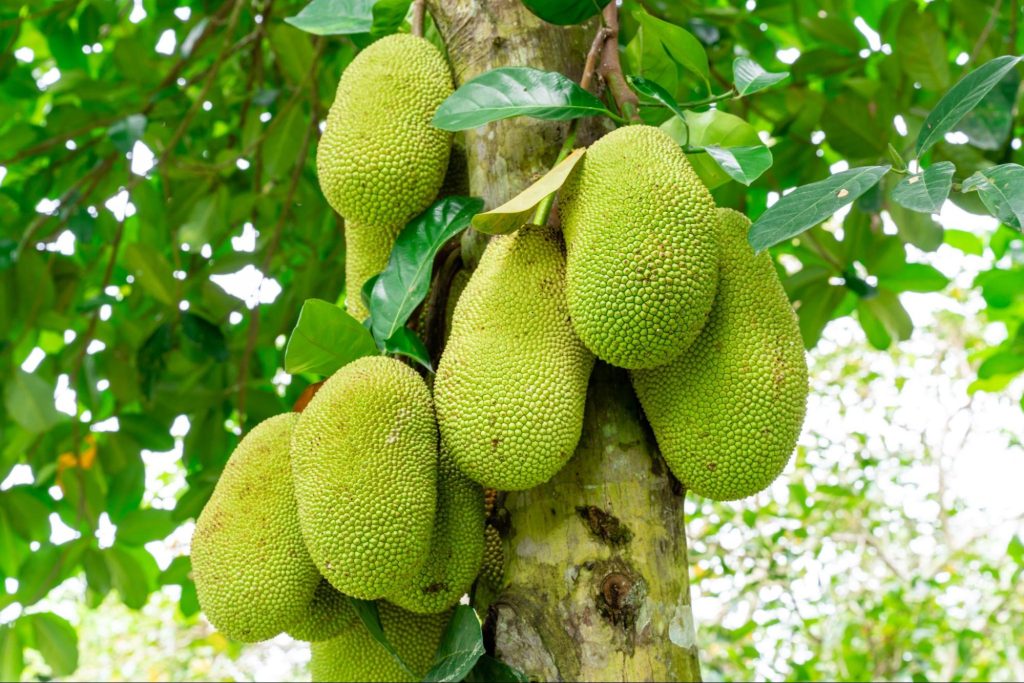
Langka or jackfruit is a giant fruit with spiky green skin and sweet, golden-yellow flesh. It’s a star in Filipino kitchens, used in everything from savory dishes like ginataang langka to sweet treats like turon.
History in the Philippines:
Believed to have originated in South Asia, jackfruit was introduced to the Philippines long before colonial times through ancient trade routes. It thrives across the archipelago, especially in tropical lowland areas.
11. Mangosteen
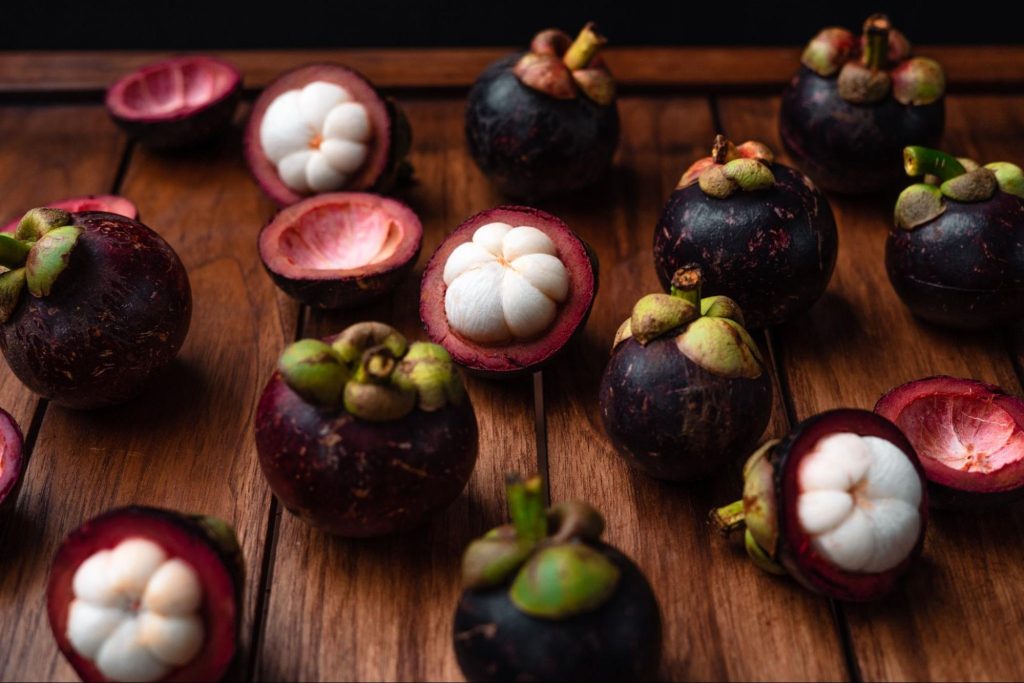
Known as the “Queen of Fruits,” mangosteen has a dark purple rind and juicy, sweet-tart white flesh that’s prized for its refreshing taste and health benefits.
History in the Philippines:
Native to Southeast Asia, mangosteen has been grown in the Philippines for centuries, with Luzon and Mindanao islands being key growing places. Its high antioxidant content makes it a sought-after superfruit.
12. Santol
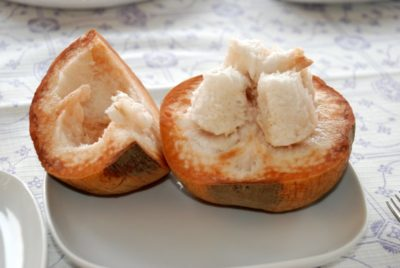
Santol, also known as cotton fruit, is a round fruit with yellow or green skin and a sweet-tart flavor that tickles the taste buds. Its fibrous flesh is often eaten fresh or turned into jams and sauces.
History in the Philippines:
Native to Southeast Asia, santol has been a part of Filipino agriculture for centuries. It’s widely grown across in almost all the provinces of the Philippines. Santol is also used by the Ifugaos for diarrhea.
13. Chico
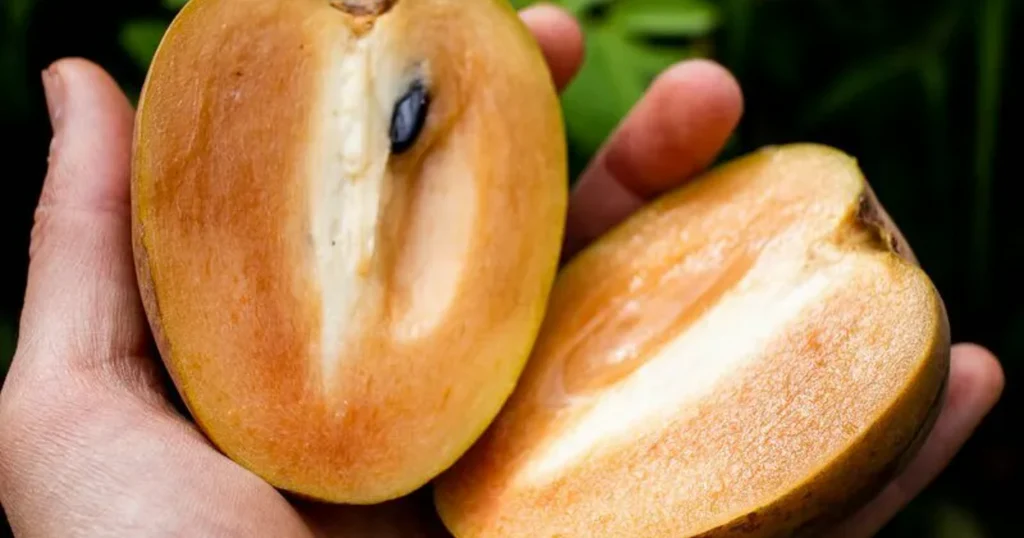
Chico, also known as sapodilla, is a small, brown-skinned fruit with sweet, grainy flesh that tastes like caramelized sugar. Its rich, dessert-like flavor makes it a favorite snack.
History in the Philippines:
Originally from Southern Mexico and Central America, chico was introduced to the Philippines during the Spanish colonial era. Today, it’s widely cultivated in Luzon and the Visayas, where it thrives in warm, tropical climates.
14. Durian
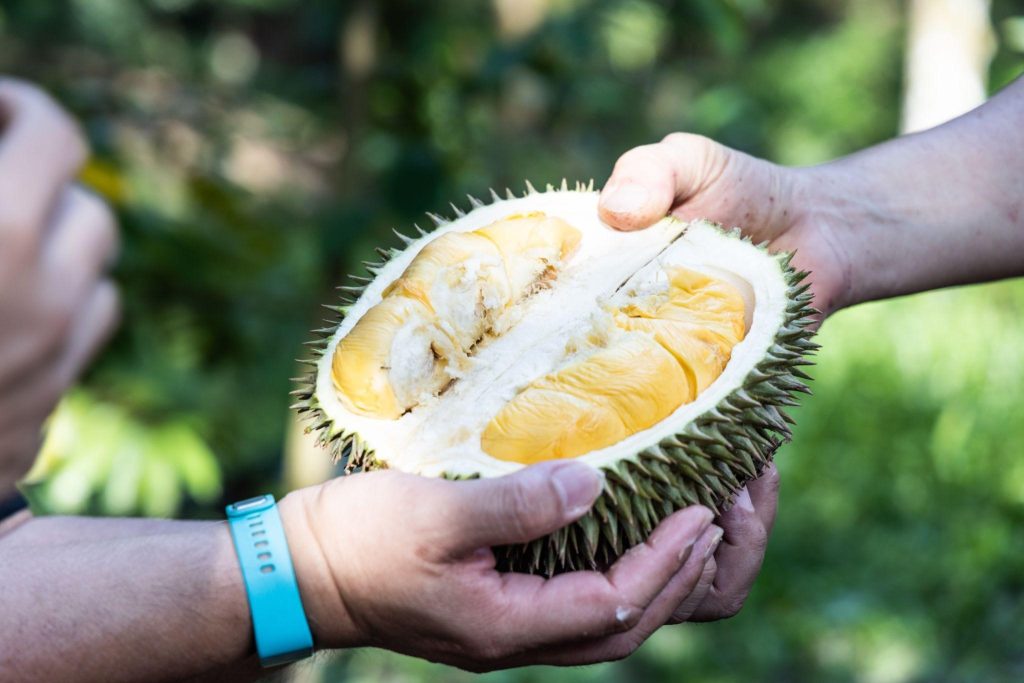
Durian is bold and unforgettable, known for its spiky shell, strong aroma, and rich, custard-like flesh. Its unique flavor blends sweetness and creaminess with a hint of savory, earning it the title “King of Fruits.” Loved by adventurous foodies, it’s a tropical delicacy like no other.
History in the Philippines:
Native to Southeast Asia, durian has been grown in the Philippines for centuries, especially in Davao, where it’s a key agricultural product. It’s celebrated annually at the Kadayawan Festival.
The Philippines, with its sunny skies and lush landscapes, is bursting with a colorful array of fruits you won’t find anywhere else! Thanks to its tropical climate and rich biodiversity, the archipelago is home to some seriously unique fruits. Which ones are your favorite?

